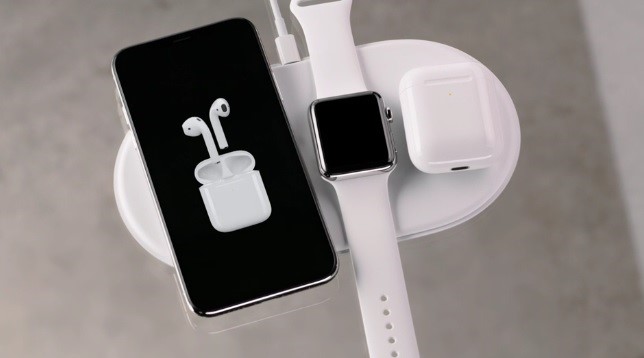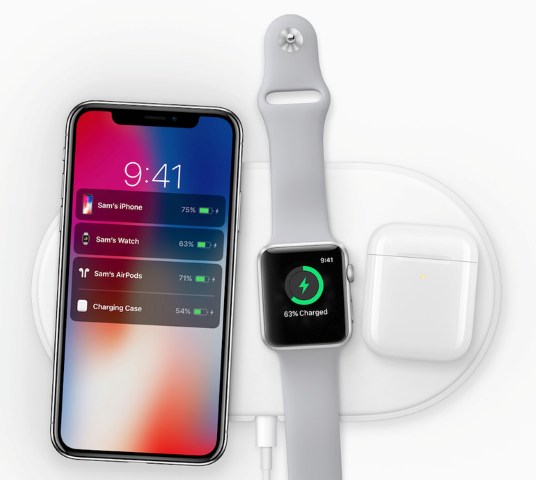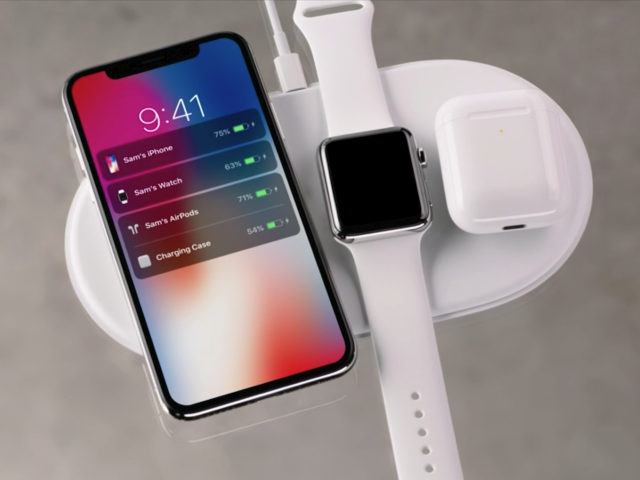Recently, in connection with Apple, there is often talk not only about the new iPhones and Apple Watch, but also about the AirPower wireless charger. By Apple's standards, this is a rather unusual product, especially because the company hasn't launched it even a year after its introduction, and at the same time, it's partly pretending that the product doesn't exist at all. But what is so special about the wireless charger from the Apple workshop, how does it work and why hasn't Apple started selling it yet? We will summarize all this in today's article.
A bite too big even for Apple
Apple AirPower was supposed to emphasize the "wireless era", which Apple has been trying to meet in recent years. Compared to common pads of a similar type, AirPower was supposed to be exceptional in that it should be able to charge up to three devices at once (iPhone, Apple Watch and new AirPods with a box supporting wireless charging). The specialty of the pad was supposed to be that charging would work regardless of where you put the device. In practice, it shouldn't matter if you put your iPhone right side up and your Apple Watch next to it, or any other way.
A kind of freedom in the possibilities of putting down the device for charging should have been the most innovative innovation - the pad should be able to charge anywhere from its surface. Achieving this goal, however, is very demanding, both from the point of view of the production of the pad as such, and from the point of view of the design of the charging circuit. And that is probably one of the reasons why there is still no AirPower, even though Apple demonstrated it to invited journalists after the keynote last year.
The delay of AirPower started to be discussed again after it became clear that Apple will not present it during this year's September keynote. As a result of this event, various "Apple-insiders" became interested in the apparently problematic development of the pad, who in the following days came up with several reports about what is wrong and why AirPower is not here yet. We wrote a separate article about it, but we'll mention it here as well - Apple obviously took too big a bite.
It could be interest you

There is no wireless charging pad with AirPower parameters on the market, and the manufacturers involved in the production of this accessory probably know why. Achieving the above-mentioned functions while maintaining at least average charging parameters is a very difficult engineering task. The people at Apple, who are working on the development of AirPower, also figured it out. The design of the pad based on the combination of several overlapping coils causes excessive heating of the device, which subsequently reduces the efficiency of wireless charging. In addition to the pad, the devices being charged also heat up, which brings with it other problems. Setting up and debugging the special communication interface in the iPhone, which controls and controls the charging of other accessories in addition to the stored accessories, is also not entirely simple. Software problems can probably be solved, but hardware problems will be much more difficult.
How AirPower works
Here we may briefly recall how wireless charging actually works, so that we can imagine the complexity and complexity of AirPower. For wireless charging to work properly, you need to place the phone's charging coil relatively exactly opposite the coil in the charging pad. A magnetic field is created between them, and with the help of electromagnetic induction, energy is transferred from the source to the battery. The tolerances for the position of both coils are quite strict, with common chargers the maximum deviation is around 10 millimeters. As soon as the contact between the two devices is not so direct, charging will not occur. Precisely the requirement to place the phone precisely is something that Apple wanted to solve with AirPower.

In order to be able to charge the phone (or any other compatible object) over the entire surface of the charging pad, the coils need to be adequately spaced as shown in the visualization below. However, once there is an overlap, we are back to the problem of excessive heating, as well as the difficulty of adequately connecting the necessary amount of charging circuits and their mutual interference.

Another issue that Apple is likely facing is device certification. AirPower should use the Qi standard, which is currently the most widely used solution on the wireless charger market. However, in order for AirPower to receive certification, it must meet all the conditions of the Qi standard, which include, for example, compatibility with all other devices that support Qi wireless charging. AirPower should thus work without problems even on competing smartphones, which is certainly something that Apple does not want to deal with too much - obviously, optimization for Apple products themselves is a big problem.

A combination of the above is responsible for the fact that there is still no charging pad from Apple. The engineers and developers working on it probably realized too late how big a bite they took, and the journey from idea to implementation takes much longer than they would have liked. If anyone has the capacity (both financial and human) to achieve something like this, it's Apple. However, it is difficult to estimate how long it may take. In the end, we don't have to wait for the successful completion and launch at all. Or Apple will eventually release a similar product, although its features and specifications will be greatly reduced from the original idea. Anyway, we'll see. In its current form, it is undoubtedly an innovative and very ambitious project. At Apple, they have already demonstrated several times in the past that they can do the "impossible". Maybe they will succeed again.
Source: GSMArena


started, insiders - men.